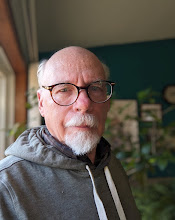The Girl on the Kerb, my new standalone for 2023, will be released sometime in Q1 2023. In this series of posts I recount the struggle to come up with a new story to write. You can find the first two parts here:
Part 1 https://clitkabooks.blogspot.com/2022/06/the-making-of-road-to-eura-part-1.html
Part 2 https://clitkabooks.blogspot.com/2022/07/the-making-of-road-to-eura-part-2.html
In those first to entries regarding this book, I discussed some of the story ideas that went into creating The Girl on the Kerb, since it is very much of a Frankenstein novel, i.e. one made up from parts of other, failed, story ideas. The short version of those entries is that I wanted a story set in a far future/post new ice-age Europe with a civil war looming over it that included the possibility that the advanced technology from the pre-ice-age might have been discovered and was going to be used as a weapon.
Fast forward to the summer of 2021. After spending several years writing short novels – I considered them more as stories and full novels, I wanted to write a real, standalone novel. And I thought that having written Keiree, set on Mars 1500 years after a deadly plague swept across the solar system, destroying Earth’s space traveling solar system wide civilization, that it might be interesting to see how Earth itself fared, after a similar time had passed. So I spent the summer daydreaming up Earth 1500 years after the plague.
The Earth I came up had all its natural resources exhausted in the building of its solar system spanning civilization, so the survivors of the plague had a finite limit to their resources, i.e. the recycled remains of the Solar Age civilization that remained on earth, since space travel was no longer possible.
Drawing from my discarded stories, I had the Yellowstone super volcano erupt shortly after the plague wiped out 75%-80% of the population, its earthquakes devastating the largely deserted cites of North America and burying the land in ash. Fifteen hundred years later, the surviving North American population, fiercely independent, is divided into small nations/tribes and living at a 19th century agricultural level. It is now considered a special cultural reservation by the world wide government, with limited trade, and travel with the rest of the world. In the past I've toyed with an America like this for a story, but in this one I’ve used this setting only for the background experience of the narrator. He is an analytical engineer who spent several years as an archaeologist in the “wilds” of North America excavating Solar Age cities and tech buried in the ash. This experience made him a desirable candidate as a volunteer secret agent, as the various regional governments of the world do not employ spies to spy on each other. Not officially, anyway.
Meanwhile the rest of the world – the parts that are still inhabited, and many remote parts aren’t since population growth is very slow – are governed by a world wide bureaucracy, as it had been in the Solar Age. This government is without leaders or politicians. Rather everyone and every aspect of the society is codified under an all-encompassing decision-tree known as the “Code.” The Code is so elaborate that it specifies how the society runs without recourse to new ideas or grey areas. For example cases in business or the law are determined by taking each aspect of the case down through an “if this than that” decision tree until the final decision is reached. Every alteration of a product must go through a similar process to determine it impact on the finite resources left on Earth. The remaining Solar Age technology allows the police to examine the memories of possible criminals to determine guilt, so that people accused of criminal action are examined and their guilt or innocence established by these machines, their punishment determined by the Code.
Much of the Solar Age buildings and technology being redundant, due to the much reduced population, has been torn down and stored away for recycling as needed – since it must last the life of humanity on Earth. To that end, the society’s technology is much reduced from the Solar Age, to something resembling the mid-20th century with trains, cars, newspapers, radios, but not things like full scale computers, or cell phones, etc. This gives me the opportunity to write the old fashioned stories I enjoy, while also giving me the freedom to treat them as I care to.
So I had my setting. The easy part. But what about a story? Always the hard part for me. The story concept that I spent the summer playing around with – unsuccessfully – was that though much of the Solar Age technology was now either buried in the ash of North America, scraped, and/or banned by the Code, there existed a secret society made up of several hundred families who were preserving all this Solar Age technology and knowledge. They were the rich and powerful families of the world, with their members holding the highest positions in the bureaucracy. They kept this knowledge alive with some shadowy end in mind. The characters in the story would get some sort of hint of this society and slowly uncover its secrets. Perhaps one of the characters would discover that they were a member of one such family before they had been initiated into the secret. Or something. Alas, despite a summer thinking about it, I could not come up with any real story line using this premise, and so as the summer drew to a close, I reluctantly shelved this world, only to revisit it in November after working on a sequel to Keiree, and starting a new Nine Star Mystery/Adventure story, The Aerie of a Pirate Prince that I only finished after writing The Girl on the Kerb. But I’ll save how I finally reached the final version of The Girl on the Kerb for the next and last installment.




No comments:
Post a Comment